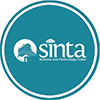Prediksi Waktu Tanam Kentang Sesuai Curah Hujan Menggunakan Analisis Spasial
Abstract
Experts have recently highlighted a decline in food production, especially potato production when combined with climate change. With fluctuations in rainfall, planting time greatly influences potato production. To stabilize it, we can adjust the potato planting time by analyzing climate changes and land changes. So that the use of technology for forecasting planting times that is suitable for potatoes can be done to create sustainable potato production. The study area for this research is Batu City. This is because Batu City is one of the productive potato producing areas. Data acquisition was carried out using secondary data from two government agencies, namely the Water Services Agency and the Meteorology, Climatology and Geophysics Agency. Table data obtained on monthly averages was processed using open source software, namely QGIS 2.14 (essen). Through research, we found a method to predict the appropriate potato planting time based on rainfall data. January to April is the recommended time to plant potatoes. Meanwhile, from June to October it is not recommended to plant potatoes.
Keywords
Full Text:
PDFReferences
Diny, D., Handayani, T., & Sofiari, E. (2017). Toleransi Tanaman Kentang ( Solanum tuberosum ) Terhadap Suhu Tinggi Berdasarkan Kemampuan Berproduksi di Dataran Medium [ Heat Stress Potato ( Solanum tuberosum ) Tolerance Based on Tuber Production in Medium Altitude ]. J. Hortikultura, 27(1), 1–10. http://www.ejurnal.litbang.pertanian.go.id/index.php/jhort/article/viewFile/7441/6583
The SMERU Research Institute. (2015). Food and nutrition security in Indonesia : a strategic review. Improving food and nutrition security to reduce stunting.
Cole, I. S., & Paterson, D. A. (2010). Possible effects of climate change on atmospheric corrosion in Australia. Corrosion Engineering, Science and Technology, 45(1), 19–26. https://doi.org/10.1179/147842209x12579401586483
Daccache, A., Keay, C., Jones, R. J. A., Weatherhead, E. K., Stalham, M. A., & Knox, J. W. (2012). Climate change and land suitability for potato production in England and Wales: Impacts and adaptation. Journal of Agricultural Science, 150(2), 161–177. https://doi.org/10.1017/S0021859611000839
Pradel, W., Gatto, M., Hareau, G., Pandey, S. K., & Bhardway, V. (2019). Adoption of potato varieties and their role for climate change adaptation in India. Climate Risk Management, 23(June 2018), 114–123. https://doi.org/10.1016/j.crm.2019.01.001
Longley, P. A., Goodchild, M. F., Maguire, D. J., & Rhind, D. W. (2011). Geographical Information Systems and Science. In City (2nd Editio, Vol. 83, Issue 3). John Wiley & Sons Ltd. https://doi.org/10.2307/215736
Riajaya, P. D. (2006). Sebaran Curah Hujan Sebagai Dasar Penetapan Waktu Tanam Kapas Pada Lahan Sawah Sesudah Padi di Lamongan , Jawa Timur. Perspektif, 5(1), 26–35.
Asmoro, T. (2010). BUDIDAYA TANAMAN KENTANG (Solanum tuberosum. L) DI LUAR MUSIM TANAM. Universitas Sebelas Maret.
Suryawardhani, N. W., Iriany, A., Iriany, A., & Sulistyono, A. D. (2017). Kesesuaian lahan tanam kentang di wilayah batu. Seminar Nasional Dan Gelar Produk 2017, 688–692.
Iriany, A., Syekhfani, Soemarno, & Suprayogo, D. (2013). Climate Change Impact to Potato Farming in the Java of Indonesia in the Mountain Range of Batu , East Java of Wahyuni, I., Adipraja, P. F. E., & Mahmudy, W. F. (2018). Determining growing season of potatoes based on rainfall prediction result using system dynamics. Indonesian Journal of Electrical Engineering and Informatics, 6(2), 210–216. https://doi.org/10.11591/ijeei.v6i2.315 Indonesia. J. App. Environ. Biol. Sci., 3(6), 48–55
Wahyuni, I., Mahmudy, W. F., & Iriany, A. (2016). Rainfall prediction in Tengger region Indonesia using Tsukamoto fuzzy inference system. Proceedings - 2016 1st International Conference on Information Technology, Information Systems and Electrical Engineering, ICITISEE 2016, December 2017, 130–135. https://doi.org/10.1109/ICITISEE.2016.7803061
Sulistyono, A. D., Hadi Nugroho, W., & Iriany, A. (2015). Development of Hybrid Model GSTARSUR-NN and Aplication for Rainfall Forecasting. In 1st International Conference Pure Applied Resources Univ. Muhammadiyah Malang (p. 104).
Lestantyo, P., Ramdani, F., & Mahmudy, W. F. (2019). Utilization of Current Data for the Geospatial Analysis on the Suitability of Apple Plantation Land Based on Fuzzy Inference Systems. Journal of Information Technology and Computer Science, 4(1), 64–75.
Doorenbos J, P. W. O. (1984). Crop water requirements Crop water requirements.
Vishnoi, L., Roy, S., Murty, N. S., & Nain, A. S. (2012). Study on water requirement of Potato ( Solanum tuberosum L .) using CROPWAT MODEL for Tarai Region of Uttarakhand. Journal of Agrometeorology, 14(December 2014), 180–185.
Gong, G., Mattevada, S., & O’Bryant, S. E. (2014). Comparison of the accuracy of kriging and IDW interpolations in estimating groundwater arsenic concentrations in Texas. Environmental Research, 130, 59–69. https://doi.org/10.1016/j.envres.2013.12.005
Kravchenko, A. N. (2010). Influence of Spatial Structure on Accuracy of Interpolation Methods. Soil Science Society of America Journal, 67(5), 1564. https://doi.org/10.2136/sssaj2003.1564
Mueller, T. G., Pusuluri, N. B., Mathias, K. K., Cornelius, P. L., Barnhisel, R. I., & Shearer, S. A. (2004). Map Quality for Ordinary Kriging and Inverse Distance Weighted Interpolation. Soil Science Society of America Journal, 68(6), 2042. https://doi.org/10.2136/sssaj2004.2042
Ramdani, F. (2011, July). Lecturing on satellite imagery processing and GIS based on internet and open source software. In 2011 IEEE International Geoscience and Remote Sensing Symposium (pp. 4080-4082). IEEE.
DOI: https://doi.org/10.18860/experiment.v2i2.24971
Refbacks
- There are currently no refbacks.
Copyright (c) 2023 Experiment: Journal of Science Education

This work is licensed under a Creative Commons Attribution-NonCommercial 4.0 International License.
INDEXED & SUPPORTED BY:
EDITORIAL OFFICE
Fakultas Ilmu Tarbiyah dan Keguruan
Universitas Islam Negeri Maulana Malik Ibrahim Malang
Jalan Gajayana 50 Malang 65144, Jawa Timur, Indonesia
Telp/Fax: +62341-552398
Email: experiment@uin-malang.ac.id / Website: http://ejournal.uin-malang.ac.id/index.php/experiment












